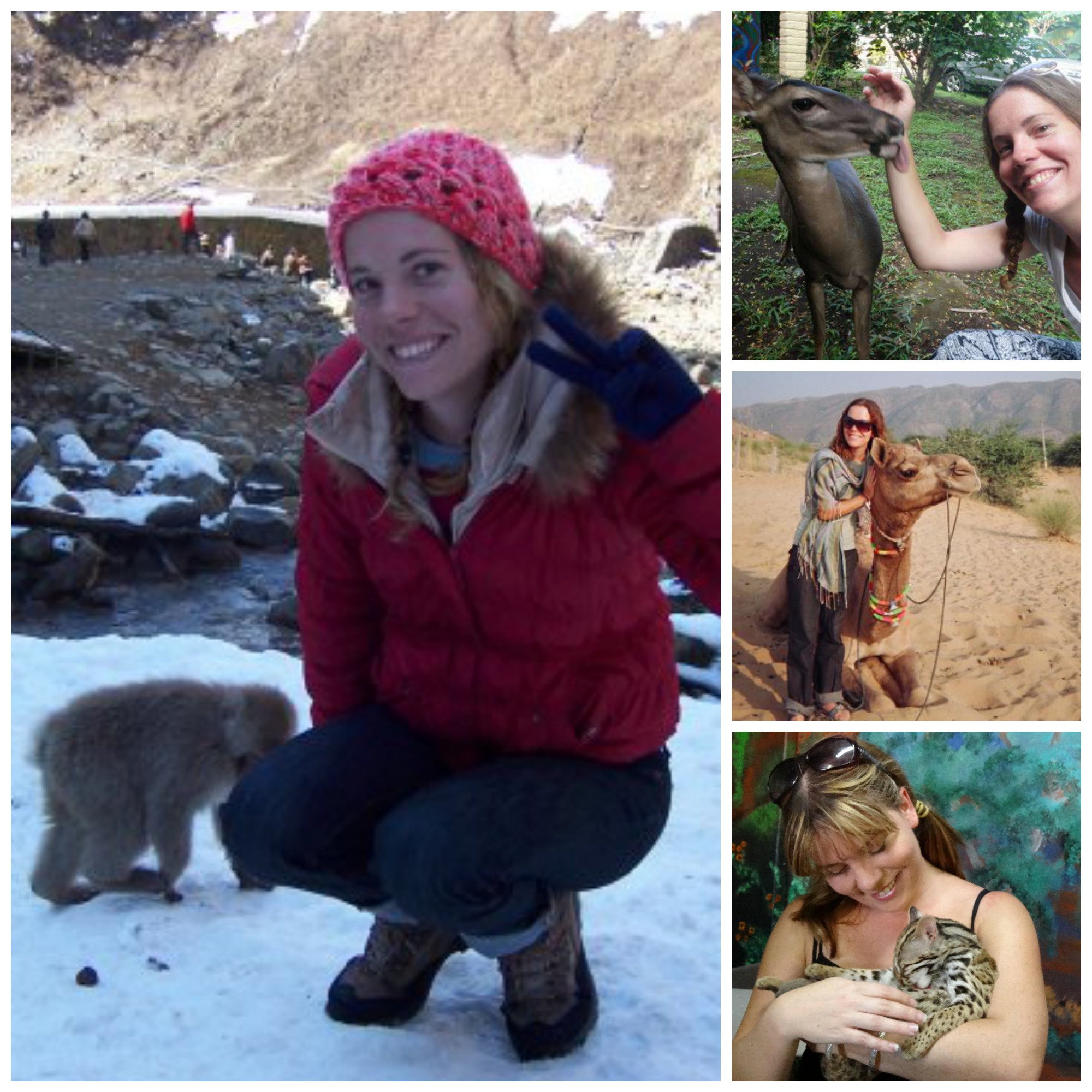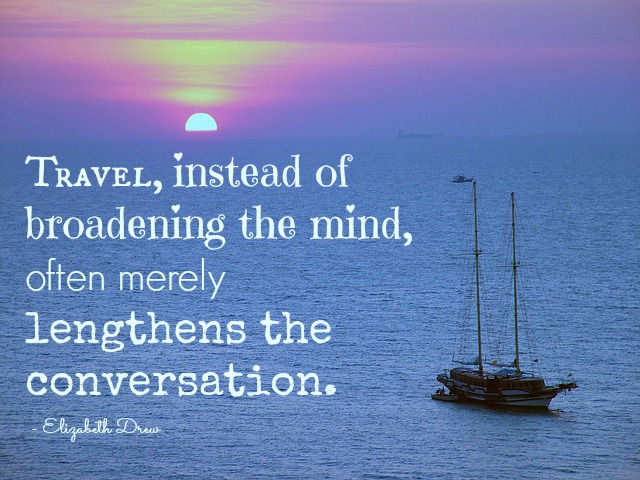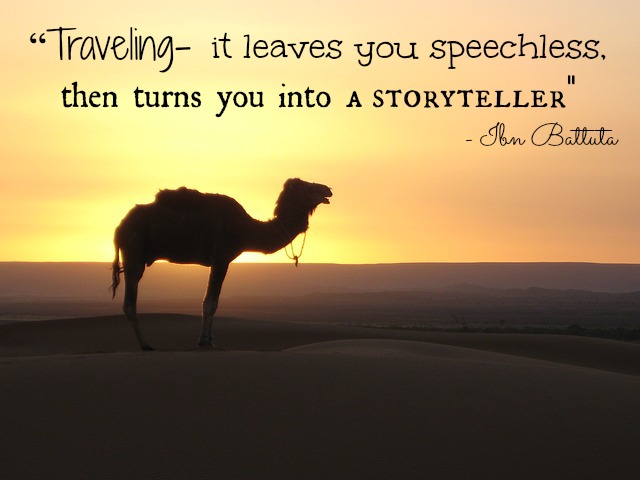When I first created this travel blog back in 2008, I read a lot of articles on how to start and successfully run a travel blog.
In typical Reannon fashion, however, I didn’t follow any of the advice I read and just did what I wanted to do; to hell with everyone’s blogging tips. I was going to do things my way.
As it turned out, my way didn’t work that well. I ended up with a long and clunky URL, a blog name no one could remember and dozens of posts whose only readers consisted of my parents and a few lost Google users who found my blog after searching “Can Sandra Bullock speak Spanish?” (the answer to that, in case you were wondering, is “no”, but she can speak German).
Most of the blogging lessons I’m sharing with you now have been learned the hard way; through good ol’ fashioned trial and error. My hope, fellow travel bloggers, is that you’ll avoid future heartache and learn from my mistakes. But then again, if you’re anything like me, you probably won’t. Oh. Well. Here’s my advice anyway.
1. A good travel blog has PERSONALITY!
Your personality is what will set your blog apart from other forms of travel guides (like guide books or magazine articles). It’s also what will keep readers coming back. Because a reader may find your blog while searching for information about a particular place, say The Great Wall of China, but they’ll immediately bounce off your site and never return unless you give them a reason to think “Hey, this chica is pretty gosh darn neat-o.”
Here’s an example:
This post about the Kelso Sand Dunes could have been dull if it’d just been a dry review of the the Mojave National Preserve and the things you can expect to see while there. But by talking about my experience sand sledding, and by jokingly referring to the way I nearly died while climbing to the top of the dunes, I personalized the post in a way guide books and Travel and Leisure magazine articles typically don’t.
How do you do this?

* Cast yourself as the star of each post!
Travel blogging is not for people who shy away from the spotlight. While no one wants to read every mundane detail of your trip, people want to see a destination through a real person’s eyes; it’s what makes review sites like Trip Advisor and Yelp so popular. People want personalized reviews from insiders they can trust. To Hell with objectivity! Leave that to the newspapers.
* Learn to love the selfie
It took me a long time to warm up to the idea of posting photos of myself in my blog. The practice smacked of bragging and self promotion and I worried people would think I was a self-obsessed brat. I’d see other travel bloggers doing it (to varying levels of success) and I’d think:
I’m not pretty enough to be posting photos of myself.
OR
I’m too old. Isn’t that something that only 21-year-olds do?
OR
People aren’t going to take me seriously if I do. Because, like, I’m a way serious writer.
But then I realized that while it is certainly possible to go overboard, a well placed selfie here or there can actually add value to a post. It personalizes the content and draws the reader into your writing in a way that a photo of pretty scenery can’t.
2. Don’t be afraid to make a fool of yourself!
People love to share in one another’s misery. The posts I’ve written which have gotten the most traffic and social media shares have been ones that I was once almost too embarrassed to publish.

Like this humiliating post about how I accidentally ended up naked in a mixed-gender hot spring in Japan, for example.
Or this post about the time I misread a sign in Japanese and set off the fire alarm while in the bathtub during a house-sitting stint in Tokyo.
Or this cringe-worthy post about how I almost peed on a public bus in Guatemala.
It took me several years to get to the point where I was comfortable posting about my less-than-stellar moments. I used to worry future employers would find these posts and choose not to hire me because I appeared to be incompetent – or worse, a total weirdo. But posts like these go a long way towards humanizing you as a travel blogger. No one wants to read dozens of posts about how “great” and “awesome” all your travels were. The popularity of the blog “We’re lost and everything is dirty” is proof of that. People love juicy drama – and the more humiliating, the better.
3. Capitalize on your strengths

Decide early on what sort of writer you are and play to that strength. Do you enjoy writing long and beautiful descriptive prose or do you prefer writing in a style that’s direct and to the point? Or perhaps writing isn’t your strong suit at all. Perhaps you’re a visual artist; in which case your travel blog should feature mostly photos and videos.
Many bloggers start off trying to imitate the successful bloggers that have come before them. And while that’s great, this method often falls flat. Like Judy Garland once said, “Always be a first rate version of yourself and not a second rate version of someone else.”
The sooner you discover who you are as a blogger, the sooner your blog will be a success. People love authenticity. And they love passion. And your blog can only have those two things if you’re able to be yourself.
Not sure which type of writer you are? Read this: Personality Types and Blogging: How Personality May Affect Your Writing.
4. Don’t be afraid to change your niche
This blog has seen several incarnations since I started it back in 2008. It began as a blog about life in Japan but then changed after I moved to California, Guatemala and later, Las Vegas. But that’s life, right? People change and evolve and so it makes sense that their blogs will change and evolve with them. Even the famous blogger Nomadic Matt, who swore he’d be a nomad for life, has settled down as a permanent resident of New York.
For a long time, I worried that these changes would result in my readers leaving me. And as it turned out, I was right to worry because they did! Most of the people who read my blog now aren’t the same people who read my blog when I lived in Japan or Guatemala. But you know what? That’s okay. Because new readers have since swooped in to replace them.
5. Social media and SEO are a necessary evil
Self-promoting sucks…But you need to do it anyway
I’m in introvert. I detest small talk and I hate schmoozing, especially with people I’ve never met. So when I first started blogging, I took the “If I write it, they will come” approach and mostly avoided social networking.
Yeah, I don’t recommend doing that.
Because travel blogging is such a saturated blogging niche, the only way your blog will stand a chance of competing with the 973847293872 other travel blogs out there is by networking. And networking a lot. I was lucky in that early in the blogging game, a popular Japan blogger publicly endorsed my site, sending thousands of her loyal followers my way. But she never would have endorsed me had I not regularly commented on her blog and interacted with her on social media.
Don’t think your blog is too good for SEO. Cause it ain’t
I used to hate the phrase “search engine optimization”. I was an artist! A creative soul! Getting bogged down in the mechanics of internet marketing and keyword research would just stifle my creativity, and I wasn’t gonna have anything to do with it.
It wasn’t until I started working for an internet marketing company, however, that I began to see how stubbornly naive I was being. If you want your travel blog to become successful (I.e, read by people other than your parents) you’re going to have to spend some time getting to know how the internet works. This means investing in a self-hosted site, crafting content that targets search traffic, and installing WP plug-ins that will help you optimize your site so that people will actually be able to find it. If that all sounds boring, well, it is. But it’s completely necessary, too.
6. Don’t compare yourself to other travel bloggers
I used to feel discouraged when I’d visit a new blog and see that it had 10,000 Facebook followers, especially if that blog was less than a year old. What am I doing wrong?! I’d wonder.
But then I realized I was only seeing a small part of the story. Sure, that blog may have been less than a year old, but maybe there were three or four failed blog attempts before that. Maybe that blogger had been writing – and amassing a loyal fan base – for over 10 years and that travel blog was just his/her’s latest undertaking. Or maybe he or she had outside help in the form of paid advertising or an SEO company. Maybe the only reason that blog had 10,000 likes was because those likes had been purchased.
The point is, most successful blogs aren’t born overnight. Travel blogging is a learned skill that takes practice. Lots and lots of practice. So keep your chin up! And don’t give up.




Thank you so very much these advice were brillent.
@Oliver – No problemo! I’m glad you found it helpful. 🙂